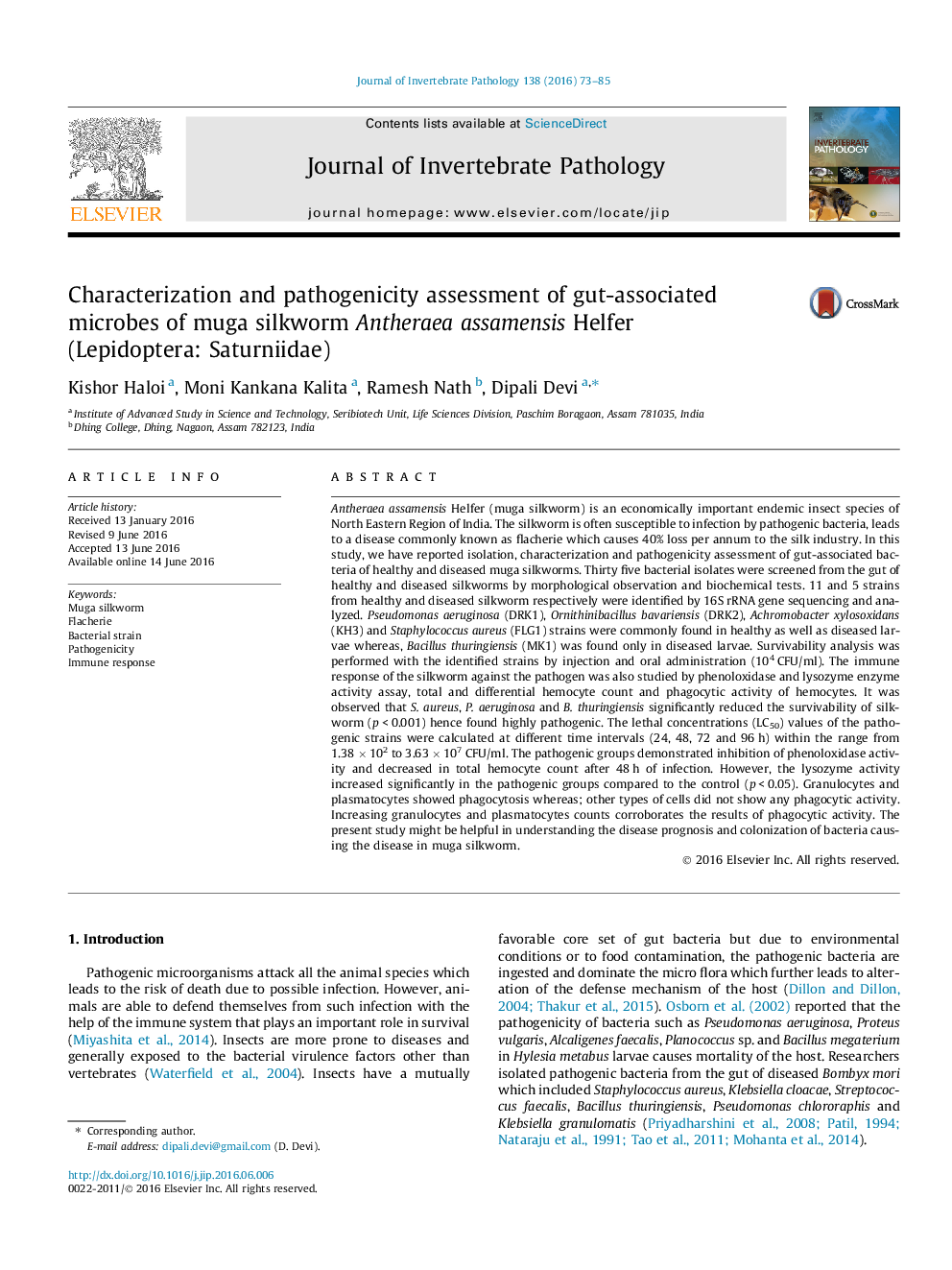| Article ID | Journal | Published Year | Pages | File Type |
|---|---|---|---|---|
| 4557501 | Journal of Invertebrate Pathology | 2016 | 13 Pages |
•Antheraea assamensis Helfer is often susceptible to flacherie disease.•A total of 35 isolates of bacteria were screened.•11 from healthy and 5 strains from diseased silkworm were identified.•Pathogenicity of the identified strains was tested against the same host.
Antheraea assamensis Helfer (muga silkworm) is an economically important endemic insect species of North Eastern Region of India. The silkworm is often susceptible to infection by pathogenic bacteria, leads to a disease commonly known as flacherie which causes 40% loss per annum to the silk industry. In this study, we have reported isolation, characterization and pathogenicity assessment of gut-associated bacteria of healthy and diseased muga silkworms. Thirty five bacterial isolates were screened from the gut of healthy and diseased silkworms by morphological observation and biochemical tests. 11 and 5 strains from healthy and diseased silkworm respectively were identified by 16S rRNA gene sequencing and analyzed. Pseudomonas aeruginosa (DRK1), Ornithinibacillus bavariensis (DRK2), Achromobacter xylosoxidans (KH3) and Staphylococcus aureus (FLG1) strains were commonly found in healthy as well as diseased larvae whereas, Bacillus thuringiensis (MK1) was found only in diseased larvae. Survivability analysis was performed with the identified strains by injection and oral administration (104 CFU/ml). The immune response of the silkworm against the pathogen was also studied by phenoloxidase and lysozyme enzyme activity assay, total and differential hemocyte count and phagocytic activity of hemocytes. It was observed that S. aureus, P. aeruginosa and B. thuringiensis significantly reduced the survivability of silkworm (p < 0.001) hence found highly pathogenic. The lethal concentrations (LC50) values of the pathogenic strains were calculated at different time intervals (24, 48, 72 and 96 h) within the range from 1.38 × 102 to 3.63 × 107 CFU/ml. The pathogenic groups demonstrated inhibition of phenoloxidase activity and decreased in total hemocyte count after 48 h of infection. However, the lysozyme activity increased significantly in the pathogenic groups compared to the control (p < 0.05). Granulocytes and plasmatocytes showed phagocytosis whereas; other types of cells did not show any phagocytic activity. Increasing granulocytes and plasmatocytes counts corroborates the results of phagocytic activity. The present study might be helpful in understanding the disease prognosis and colonization of bacteria causing the disease in muga silkworm.
Graphical abstractFigure optionsDownload full-size imageDownload as PowerPoint slide
